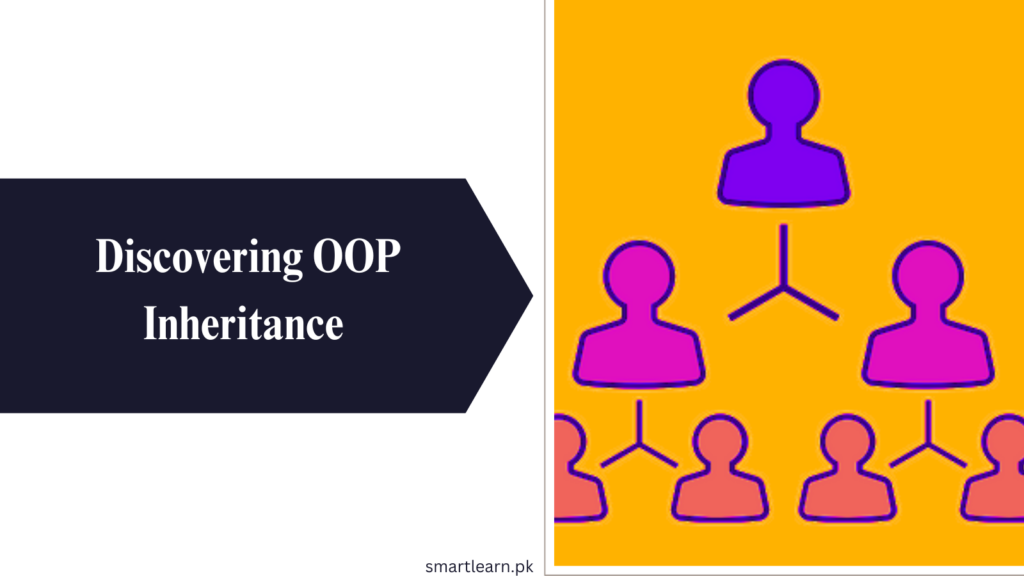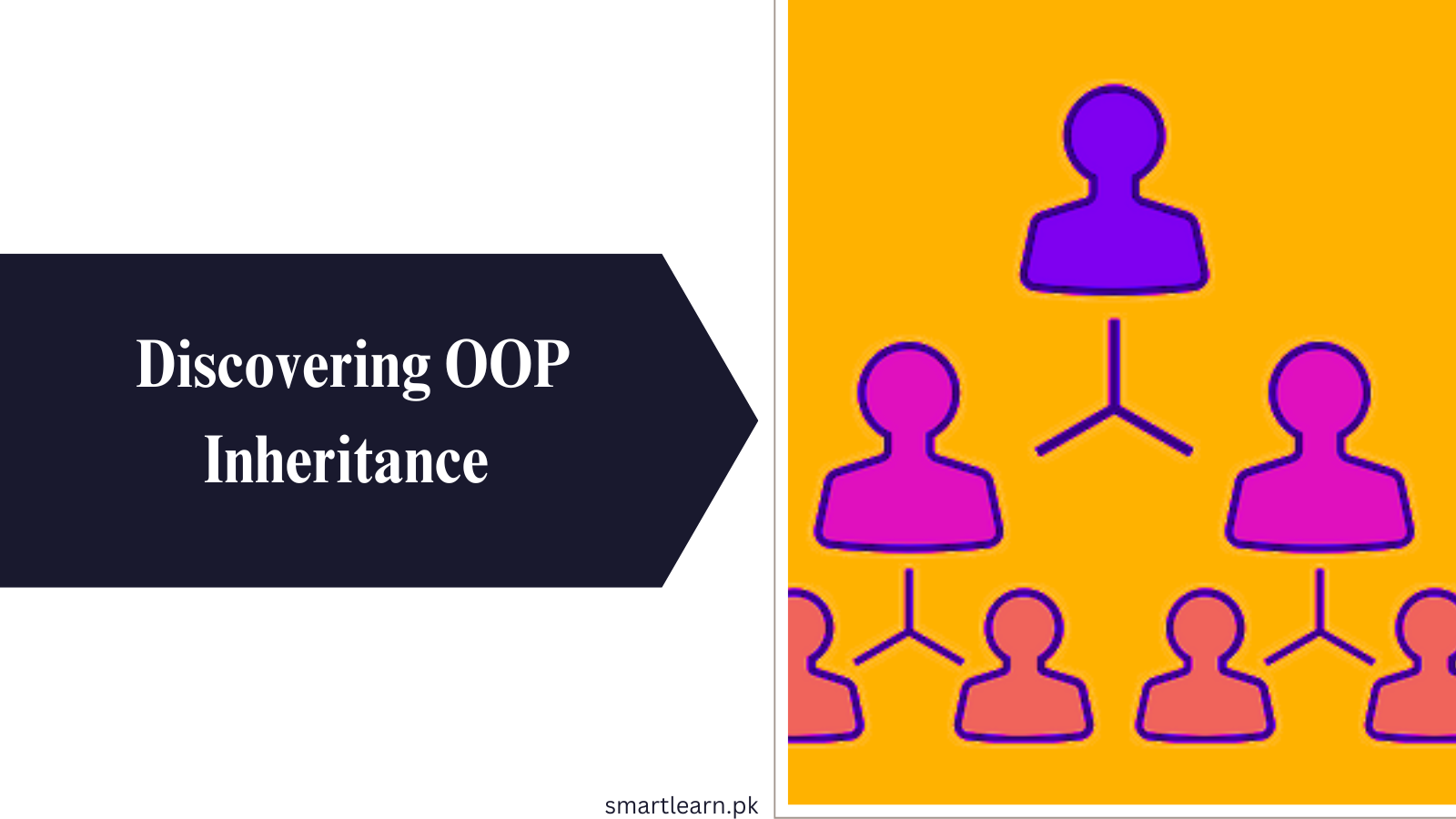
What is Inheritance
Inheritance is a fundamental concept in object-oriented programming (OOP) where a new class (subclass or derived class) is created by taking on the properties and behaviors of an existing class (superclass or base class). “Inheritance meaning in Urdu is ‘وراثت’ (Warasat).” Also, the inherit meaning in Urdu is وراثت میں پانا” (Warasat mein paana). This allows the subclass to reuse and extend the functionality of the superclass, promoting code reusability and organization. Inheritance enables you to establish a hierarchical relationship between classes, where the subclass inherits attributes and methods from the superclass, while also having the flexibility to add or override its own attributes and methods. Inherited synonyms are “Acquired,” “received,” or “obtained”. The short inheritance definition is that “Inheritance is the process where a new class inherits properties and behaviors from an existing class in object-oriented programming.”
The Purpose of Inheritance
The purpose of inheritance in object-oriented programming is to facilitate code reuse and promote the creation of a hierarchical structure of classes, allowing subclasses to inherit attributes and methods from a superclass. This helps in organizing and extending code efficiently while maintaining a clear relationship between different classes.
Types of Inheritance
Certainly, there are several types of inheritance in object-oriented programming:
Single Inheritance:
In this type, a subclass inherits from only one superclass. It forms a linear hierarchy of classes.
Multiple Inheritance:
Here, a subclass can inherit from more than one superclass. This can lead to complex relationships and potential conflicts.
Multilevel Inheritance:
In this scenario, a class inherits from another class, which in turn inherits from another class. It forms a chain of classes with each level adding more specific features.
Hierarchical Inheritance:
Multiple subclasses inherit from a single superclass. This forms a branching hierarchy where different subclasses share common attributes and methods.
Hybrid (or Mixed) Inheritance:
This is a combination of any of the above types. It’s used to take advantage of different aspects of inheritance to suit specific programming needs.
Each type of inheritance has its advantages and considerations, influencing how classes are organized and how code is structured.
Related:Exploring The Four Pillars of OOP (Object Oriented Programming)
Inheritance in Java:
In Java, inheritance is a key feature of object-oriented programming (OOP) that allows a new class (subclass) to inherit properties and behaviors from an existing class (superclass). This promotes code reuse and structuring, enabling the creation of more specialized classes based on the characteristics of a more general class.
To establish inheritance in Java, you use the extends keyword. The subclass inherits all the public and protected members (fields and methods) of the superclass, while also having the option to override or extend these members as needed.
Inheritance facilitates the “is-a” relationship between classes, where a subclass is a specialized version of the superclass. This concept encourages better organization of code, as common attributes and methods are placed in the superclass, reducing redundancy and improving maintenance.
However, Java supports only single inheritance, meaning a class can inherit from only one superclass. To address this limitation, Java introduced interfaces, which allow a class to implement multiple interfaces, achieving a form of multiple inheritance by defining method signatures that must be implemented by the class.
Types of Inheritance in Java:
-
Single Inheritance
-
Multiple Inheritance (achieved through interfaces)
-
Multilevel Inheritance
-
Hierarchical Inheritance
Advantages and Disadvantages of Inheritance in Java
Advantages of Inheritance in Java
Code Reusability: Inheritance allows you to reuse code from existing classes, reducing duplication and promoting efficient use of resources.
Modularity: Inheritance enhances the organization of code by creating a hierarchy of classes that represent real-world relationships, making the code more manageable and comprehensible.
Polymorphism: Inheritance enables polymorphic behavior, where objects of different derived classes can be treated as objects of their common base class, promoting flexibility and extensibility.
Method Overriding: Derived classes can override methods from their base classes, allowing them to provide specific implementations while maintaining the same method signature.
Encapsulation: Inheritance supports encapsulation, as you can define attributes and methods as private or protected in the base class and provide controlled access to them in derived classes.
Disadvantages of Inheritance in Java
Complexity: Deep inheritance hierarchies can lead to complex relationships and make code harder to understand, debug, and maintain.
Tight Coupling: Excessive use of inheritance can lead to tight coupling between classes, making changes to base classes impact multiple derived classes.
Limited Flexibility: In some cases, using inheritance can limit the flexibility to make changes or add new functionality to the derived class without affecting the base class or other derived classes.
Inherited Code: Inherited code might include attributes or methods that aren’t relevant to the derived class, leading to unnecessary bloat.
Name Clashes: In multiple inheritance scenarios, naming conflicts can arise if two base classes have methods or attributes with the same name, potentially causing ambiguity.
Java Inheritance Example
// Base class
class Vehicle {
String brand;
int year;
Vehicle(String brand, int year) {
this.brand = brand;
this.year = year;
}
void displayInfo() {
System.out.println("Brand: " + brand);
System.out.println("Year: " + year);
}
}
// Derived class
class Car extends Vehicle {
int numOfDoors;
Car(String brand, int year, int numOfDoors) {
super(brand, year);
this.numOfDoors = numOfDoors;
}
void displayCarInfo() {
displayInfo();
System.out.println("Number of doors: " + numOfDoors);
}
}
public class Main {
public static void main(String[] args) {
Car myCar = new Car("Toyota", 2022, 4);
myCar.displayCarInfo();
}
}
Inheritance in Java code example, there are two classes: Vehicle (the base class) and Car (the derived class). The Car class inherits from the Vehicle class using the extends keyword. The Car class adds an additional attribute numOfDoors and a method displayCarInfo() while also using the displayInfo() method from the Vehicle class through inheritance. The Main class demonstrates how to create an instance of the Car class and display its information.
Inheritance in OOP:
In object-oriented programming (OOP), inheritance refers to the mechanism by which a new class, known as the subclass or derived class, is created based on an existing class, known as the superclass or base class. This allows the subclass to inherit attributes (data fields) and methods (functions) from the superclass, promoting code reuse, modularity, and the creation of a hierarchical class structure.
Inheritance enables the subclass to inherit the behaviors and characteristics of the superclass while also providing the flexibility to add its own attributes and methods or to modify the inherited ones. This concept establishes an “is-a” relationship between classes, where the subclass is a specialized version of the superclass, and it forms a fundamental building block of OOP, enhancing code organization and maintenance.
Inheritance in C++:
In C++, inheritance is a fundamental concept of object-oriented programming where a new class, called the derived class, is created by inheriting properties and behaviors from an existing class, known as the base class. This allows the derived class to reuse the attributes and methods of the base class, while also enabling the addition of its own attributes and methods or the modification of inherited ones.
C++ supports several types of inheritance, such as single, multiple, and multilevel inheritance, allowing developers to create complex class relationships. Inheritance enhances code reusability, modularity, and the organization of code, as it establishes a hierarchical structure that reflects the relationships between different classes. This concept of inheritance is pivotal in C++ programming, as it enables the creation of specialized classes while maintaining a clear link to the common attributes and behaviors defined in the base class.
Related: Introduction to Encapsulation in oop: A Beginner’s Guide to OOP Concept
Python Inheritance:
Python inheritance is a fundamental concept in object-oriented programming (OOP) where a new class, referred to as the derived class or subclass, is created by inheriting attributes and methods from an existing class, known as the base class or superclass. This mechanism allows the subclass to reuse and extend the functionality of the base class, promoting code reusability and organization.
In Python, inheritance is established using the syntax class SubclassName(BaseClassName):, indicating that the subclass is derived from the specified base class. The derived class inherits the attributes and methods of the base class, while also having the flexibility to add new attributes and methods or to override existing ones.
Python supports single inheritance, meaning a class can inherit from only one base class. However, multiple inheritance can be achieved using a combination of classes and mixins. Inheritance is a core principle of OOP in Python, facilitating the creation of a hierarchy of classes that represent real-world relationships, making code more modular and maintainable.

